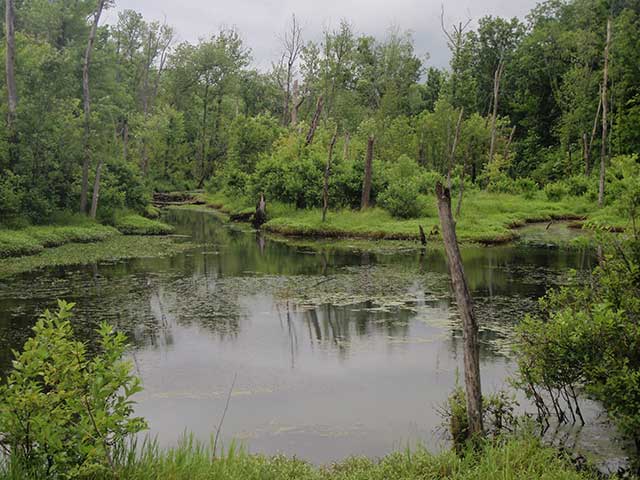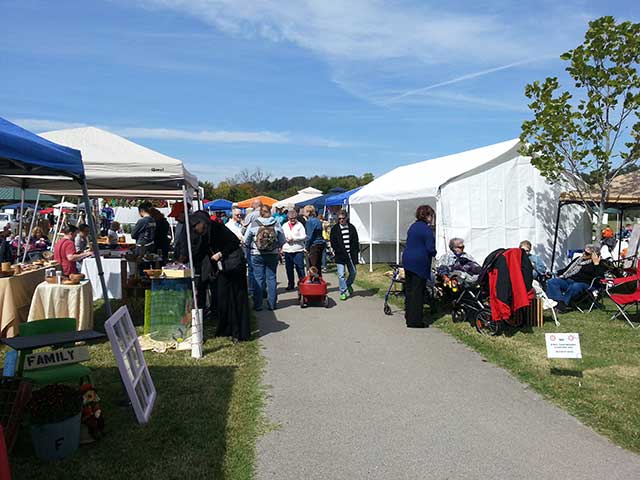Cheatham County Sustainable Tourism
Rural Economic Development Implementation
 |
||
Sitting literally on Nashville's doorstep, quiet Cheatham County might as well be a world away. Rich in scenic beauty and blessed with numerous natural and cultural resources, the county maintains its essentially rural character and has a relatively small population of about 40,000. The county's geography presents a challenge, however. The Cumberland River bisects the country from east to west; only one bridge connects the two halves of the county by road. The southern half is further divided by the Harpeth River, which flows northwest and north to join the Cumberland just below Ashland City. Another challenge is the county's shape; Cheatham County is not a large county, but it is elongated, and a drive from north to south can take almost an hour. Due to its geographic impediments, rural setting, small population, and lack of large employers, Cheatham County faces unique economic issues. The county has the highest external commuting rate in the state of Tennessee; a full 82.5% of workers travel outside the county to work, most in adjoining Davidson County. Many workers formerly engaged in agriculture or employed in local manufacturing industries have been forced to join the commuter workforce in order to earn a living. Cheatham County workers spend a sizeable proportion of their time commuting, with more than a third taking over 30 to 45 minutes to reach their job, considerably higher than the national average. Rising gasoline prices only increase the burden on the commuting workers. Only 3,300 of the approximately 21,000 skilled workers in Cheatham County are employed within the county. The low daytime population increases the economic stress on businesses and restaurants. Cheatham County has the highest retail leakage rate of any county in Tennessee, with a current rate of 68% according to Site To Do Business Online. The only product that experiences a zero retail leakage percent in the county is gasoline. With so many workers and so much consumer spending heading out of county, community leaders are looking for ways to bring revenue into the county. One obvious way is to focus on Cheatham County's outstanding natural, cultural, and recreational resources. By developing the county's tourism industry and targeting specific new businesses related to the county's recreational and cultural resources, local jobs can be created. In addition to creating new jobs, additional tourist spending will boost revenues at other county businesses such as restaurants, service stations, shops, and lodging. Increased sales taxes will help schools and public services while reducing the need for property tax increases. Recognizing the need for more economic development opportunities within the county, Cheatham Vision was funded and launched in 2010 by local business leaders with the intent to improve Cheatham County's economy and overall quality of life. Later that year Cheatham Vision released Open for Business, a three-year economic, business, and workforce development plan. One of the specific projects detailed in the plan was to identify, develop, and market the county's cultural and recreational assets to a local, regional, and national audience in order to generate jobs, positive economic activity, and increased sales tax revenue. In early 2012, the Cheatham County Chamber of Commerce formed a collaborative partnership with Cumberland Region Tomorrow (CRT) and with their assistance applied for and secured a Rural Business Enterprise Grant through the Tennessee Rural Development Program of the U.S. Department of Agriculture. The grant provides funding for an eight-month project to inventory, access, and document all existing and potential tourism and recreational resources in Cheatham County and to develop a sustainable tourism plan with specific emphasis on enhancing the county economy by targeting specific business types to attract even more tourists, sportsmen, and recreationists. CRT was contracted to provide consulting services to complete needed resource assessment, provide technical analysis, perform gap business and incentive analysis, coordinate community engagement, and generate the final deliverable, a sustainable tourism strategy. In addition, CRT agreed to coordinate with state-level rural economic development partner agencies including the Tennessee Departments of Agriculture, Tourism, Wildlife Resources, and Economic and Community Development so that Cheatham County objectives align with state rural economic development objectives and incentives to ensure successful implementation. "This is a true rural economic development project aimed at improving the Cheatham County economy by developing and enhancing a tourism and recreation industry based on its unique natural, cultural, and recreational resources." CRT agreed to coordinate the effort, envisioning a three-part project. The first would be a comprehensive inventory of all of the county's existing and potential tourism resources. Second, a review of the inventory and accompanying demographic research would lead to a gap analysis study that will identify additional tourism-related businesses. Finally, the plan would provide a toolbox of ideas for enhancing existing resources and recruiting new businesses to create a robust tourism infrastructure. CRT would bring to the project its extensive experience in quality-growth planning and provide technical assistance through its GIS GreenPrint Tools for Quality Growth, a GIS-based planning decision-making tool through which resources are being mapped and evaluated for inclusion in the plan.
To conduct the field inventory and write the tourism plan, CRT brought in its longtime collaborator, Nashville-based natural and cultural resource planning firm Pawpaw Partners. This small company had worked with state scenic byway and interpretive trail projects and recently completed a sustainable tourism plan for the three-county Tennessee Highlands area in the Upper Cumberlands. The Pawpaw team conducted a detailed field inventory over the summer, recording more than 40 natural, cultural, or recreational areas that were already attracting tourists and recreational users or that they felt had the potential to draw others if properly marketed. These sites included the popular Harpeth River State Park, where tens of thousands of paddlers crowd the historic Narrows of the Harpeth section each summer, the Cheatham Dam reservation and its heavily used campgrounds, and AdventureWorks, a popular private facility offering zip-line tours, corporate team-building, and other outdoor adventure opportunities. The more popular sites were already well known, but the Pawpaw planners saw great potential in lesser-used areas. Infrequently used sites such as the Bull Run Recreation Area, leased by Ashland City from the Corps of Engineers, and the Tennessee Wildlife Resources Agency's (TWRA's) Dyson Ditch Refuge are teeming with wildlife and could be featured on a "watchable wildlife" tour of the county. "Birdwatchers and other wildlife enthusiasts spend more per person than virtually any other group of tourists," reported Pawpaw resource specialist Sherry Beard, "and we see great potential in drawing them to Cheatham County's outstanding collection of natural areas." One of the county's greatest opportunities is monetizing the tremendous resources of the Cheatham Wildlife Management Area (WMA), which along with other areas and refuges under its administration occupies more than 26,000 acres of the relatively small county. Purchased and maintained for public hunting lands, the main area occupies a long stretch of upland forest and fields on the ridges between the Harpeth River and Sams Creek. While hunting draws the most users, the WMA is also rich in non-game wildlife; for instance, some woodland areas in the WMA are managed to provide habitat for the Cerulean warbler, a beautiful, tiny, neotropical songbird whose worldwide numbers are fast declining. Tennessee Department of Environment and Conservation and TWRA staff members have discussed ways to make the WMA more accessible outside of hunting season, but since the area funding is almost entirely from hunting-license fees, the needs of the hunter will always come first. Still, TWRA is beginning to allow other uses; the rugged Muddy Buddy bike ride and run series is now held at the WMA and drew more than 3,000 visitors in 2012. 
CRT and Pawpaw, along with the Chamber and other business leaders have looked at each of the county's four incorporated communities and determined recommendations for a specific marketing strategy for each. Ashland City will be promoted as a recreational center, Kingston Springs for its historic character, and Pleasant View for its agricultural heritage. Pegram, just west of the Bellevue section of Nashville, will be marketed as a center for local arts and crafts, building on the popular Harpeth River Gallery, which features the work of numerous regional craftspeople, and Fiddle and Pick, which offers concerts and training in traditional and regional music. A new monthly West 70 Arts Cruise along U.S. 70 through the community debuted this summer and already draws numerous artists and hundreds of new visitors. Pawpaw resource economist Angela Riffe interviewed owners of tourism-related businesses and surveyed visitors at various venues. This and other data she has collected is being analyzed by Cheatham Chamber, economic officials, and CRT to help determine what gaps can be filled to complete the tourism infrastructure in the county and will provide local leaders the demographic and economic data needed to expand existing and recruit new businesses. Possibilities include the county's first high-end hotel, incubator space for artists, outdoor outfitters, and agritourism resources. "By enhancing Cheatham County's tourism industry and by targeting specific new businesses related to the county's recreational and cultural resources, new, and more important, local jobs can be created, and revenue can increase. In addition to new jobs, additional tourist spending will boost revenues at other county businesses such as restaurants, service stations, shops and lodging, and also increase sales taxes." The Cheatham County Sustainable Tourism Plan will be completed this winter, and county business owners and residents will have a chance to offer their input in upcoming public open houses. In addition to the targeted business recruitment strategy, the plan will provide the Chamber and economic development leaders with new marketing tools for the Vision Cheatham Tourism Cluster along with new watchable wildlife and motorcycle tours, enhanced ecotourism, and a new arts initiative. Thousands of new visitors will soon discover this quiet county right on Nashville's urban edge and support local economic and community development objectives through innovative planning and marketing strategies completed through this first-ever Tennessee project. * Richard Quin is the principal at Pawpaw Partners, natural and cultural resource planning. |
Table of Contents
Due to its geographic impediments, rural setting, small population, and lack of large employers, Cheatham County faces unique economic issues.
Leaders are looking for ways to increase revenue. An obvious way is to focus on the county's outstanding natural, cultural, and recreational resources.
The Cumberland River Bicentennial Trail, heavily used by walkers and cyclists, traverses natural areas bordering its namesake river.
|
|



